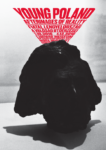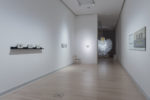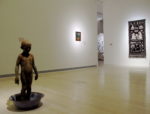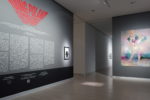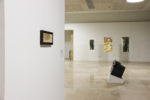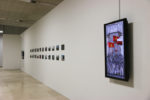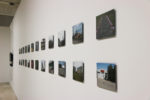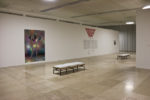Young Poland
Young Poland – Afterimages of Reality
1.10 – 4.12.2016
Ludwig Museum – Museum of Contemporary Art, Komor Marcell u. 1, Budapest
Young Poland – Afterimages of History
13.10 – 21.11.2016
Museum of Yugoslav History, 6 Boticeva street, 11000 Belgrade
The way we currently perceive the surrounding reality requires historical reasoning in order to see the elapsing present as the past. One must become sensitised to this dimension of the present, so that personally experiencing the history occurring now can become an everlasting means of referring to both the past and the future.
History follows the swing of the cultural pendulum, invoking a hereditary mass of impressions – historical symbols are often more influential as pop-cultural artefacts than as components of tradition or historical fact. Traditional notions of history teach us the rule that the times we live in are somehow “exceptional”. Observing reality is possible thanks to afterimages of reality; transitory images that linger in our consciousness, despite having faded into history.
27 years after the fall of the “Iron Curtain”, Poles are still struggling with identity issues. Only after 1989 – for the first time in fifty years – were they able to discuss and examine Poland publicly, without censorship. Today, they are still pondering the true nature of Poland and the Poles.
The 1990s and early 21st century were marked by an attempt to process the Communist years and wartime traumas. Over the last decade, there has been a clear shift towards new issues which were once virtually absent from public debate. Numerous publications, films, and the opening of Polin (the Museum of the History of Polish Jews) stirred up lively discussions regarding Poles’ attitudes towards Jews and Jewish heritage in Poland. The multicultural Poland that was almost completely eradicated in World War II and under Communist rule is now slowly beginning to re-emerge. There is increased awareness that Poland was never a homogeneous country, but rather a place in which many nationalities and religions coexisted. In the 21st century, Polish society has also been forced to face up to its history, heritage, and the myth of the Second Polish Republic. There are also profound changes in attitudes towards the Catholic Church and faith per se. Some of the population are deeply concerned by the growth of secularisation, while others see it as a chance to build a society based on genuine democratic principles.
Alongside the continuing advance of capitalism, there is a constant air of uncertainty. The younger generation – distanced from history and free of the typical Polish complexes of the Communist era – is actively engaged in building an identity, revisiting the past and striving to reacquaint itself with history. At the same time, it encounters problems stemming from globalisation, commercialisation, and a crisis of values, which are common to young people the world over.
The group exhibitions Young Poland – Afterimages of Reality and Young Poland – Afterimages of History are a statement by artists deliberately presenting, analysing, and defying the reality of Poland. The exhibition attempts to explore and observe themes of interest to a younger generation that must deal with history and the transition in order to find its place in the collective consciousness of both the country and the world.

